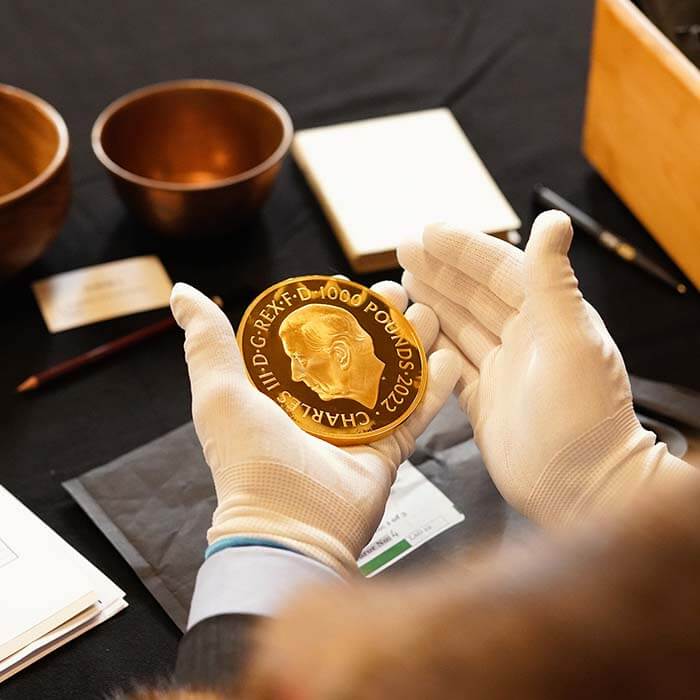Royal Connections
As one of the oldest working mints in the world, The Royal Mint has produced coinage for four British Royal Houses, including the Tudors, Stuarts, Hanovers and Windsors (previously Saxe-Coburg-Gothas). Over time, British monarchs have collaborated with us to capture their respective reigns through coinage.

Where It Began
A coin is much more than its face value; it is a year-dated piece of history imbued with heritage and legacy. We have been minting coins for more than 1,100 years but, as we don’t have a ceremonial starting point, we can only determine the date from the record of the coins themselves.

Alfred the Great
The link between The Royal Mint and British monarchs began with Alfred the Great c.880. During the resettlement of London, the Anglo-Saxon ruler became the most influential monarch in British history. His success was the result of many changes that shaped the nation and monarchy, including his grand vision of a united Britain. Alfred the Great rebuilt London after the Viking raids and eventually reformed the currency system, establishing a series of mints around the country.
Since then, we have worked closely with every British monarch. Each reign has resulted in a series of unique and distinctive coinage portraits, and these effigies helped to spread the word and successes of each respective new king and queen. For many citizens, coinage was the only way they could see their monarch’s likeness.

The Royals: Past and Present
Our coinage story begins with Alfred the Great’s silver penny, which dates back to the late ninth century and played a part in the reformation of Britain’s currency. During the reign of Edward III in the 1340s, the first circulating gold coin appeared in the form of the gold noble, which transformed British currency forever. In 1489, Henry VII began his reign as the first king of the Tudor dynasty. Wanting to signify his power and might, Henry VII ordered a ‘new money of gold’ that led to The Sovereign, which is still known today as the coin of the monarch.
In 1660, Charles II returned to the throne and reigned until 1685, encouraging the introduction of new coin-production methods during his reign. Between 1685 and 1837, multiple kings and queens reigned over Britain, including James II (r.1685–88), William III (r.1689–1702), Queen Anne (r.1702–14), George I (r.1714–27), George II (r.1727–60) and George III (r.1760–1820). However, these monarchs did not have a
significant effect on British coinage.
During the reign of George III, the Napoleonic Wars began in 1803, which meant the suspension of the gold standard in Britain to finance the war. During the reign of George IV (r.1820–30) and following the end of the Napoleonic Wars, the great coinage reform occurred, which was an attempt for Britain to re-establish its currency and resulted in the revival of The Sovereign. In 1830, William IV acceded to the throne and reigned until 1837, followed by Queen Victoria who reigned for a momentous 63 years between the nineteenth and early twentieth centuries. Despite her long reign, she had only five coinage portraits, the same number as Her Late Majesty Queen Elizabeth II.
Designed by Mary Gillick, Queen Elizabeth II’s first definitive coinage portrait was issued in 1953. Gillick’s design captured the optimistic start of a truly remarkable reign, showing the monarch wearing a laurel wreath and facing right.
In the 1960s, The Royal Mint relocated from Tower Hill to a purpose-built site in Llantrisant, South Wales, and Queen Elizabeth II officially opened the new site on 17 December 1968, ready for decimalisation. Most recently, we released the official coinage portrait of His Majesty King Charles III, which received official royal approval and was unveiled on 8 December 2022.



